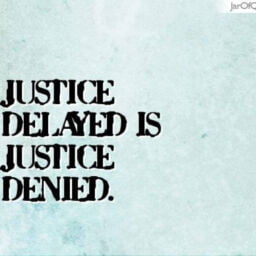Introduction
The idea behind punishment is to provide justice to the aggrieved and also to preserve protection and security in society. Punishing an offender is not just to embarrass him, but there is a greater aim to be accomplished and that is to create a peaceful community. Crime is universal in society and is inseparable. A lack of punishment produces no safety for citizens in society. So punishments have to be levied on violators of the law. State officials have recognized the need to enforce justice. The justice administration began with the emergence of the political state. Certain states were not effective to monitor crime and imposing penalties on offenders. The State has implemented the notion of “a tooth for a tooth,” “An eye for an eye,” “a life for a life. As the power of the State grew, the State began to behave as a judge to determine guilt and enforce the penalty. So, punishment is important for this social cohesion and justice to be sustained which are the essential foundations of the state. There are different theories of punishment i.e., retributive, preventive, deterrence, and reformative.
The concept of Reformative Theory of Punishment
The object of punishment is to “reform the offender as a person, so that he may become a normal law-abiding member of the community once again.” The focus here is not on crime only, the damage caused or the deterrent impact that punishment might have, but on the person and offender’s personality. By the process of individualization, the purpose of punishment should be to reform a convict. It is founded on the humanistic idea that he should not stop being a human being even though he commit a crime. An attempt should also be rendered to reform him during the time of his imprisonment to bring about the offender’s moral transformation. Over the time of his incarceration, he must be trained and educated in some art or business so after his prison term, he will be prepared to open his life properly. The supporters of this theory argued that a progressive shift could be made in their characters by the sensitive, thoughtful, and loving care of the criminals. Also, the cruelly hardened inmates with positive words and mild advice may be reformed and turned into supportive companions. The only method of punishment accepted by the proponents of reform theory is moderate imprisonment with probation. Reformists see punishment as a rehabilitation mechanism and aim to shape the actions of offenders on the grounds that criminals are not born but created by society’s climate. It is therefore the obligation of society to change him.
Usage of incarceration less often, abolition of short sentences and effort to use jail as training instead of pure punishment, greater use of probation, parole and suspended sentences are the evidence of a reforming trend.[1] One may do a felony either because the temptation of motive is greater or because the constraints set by character are weak, the reformatory theory needs to reinforce the man’s character so that this theory can perceive medication to be an easy victim of his own temptation. In Narotam Singh v. State of Punjab[2], the Supreme Court stated that the Reformative approach to punishment should be the criminal law’s objective to promote rehabilitation without offending community conscience and to secure social justice.[3] In the case of Musa Khan v. State of Maharashtra[4], the Supreme Court has noted that the intention of all social legislation should be to reform offenders of juvenile. In Rakesh Sharma v. the State of Rajasthan[5], the court remembered that the offender had been awaiting trial for a long time and had already been in prison for 6 and a half months. It was stated that it’s not necessary for the accused petitioner to stay in prison for a prolonged period and it was important to allow the accused petitioner to change since no more imprisonment would gain any beneficial purpose.
Criticism on Reformative theory
- Reformative theory expects improved jail facilities and equipment, proper cooperation between various disciplines and continuing effort on their part to mould offenders which needs tremendous investment that cannot be afforded by poor countries.
- Instead of prevention, the rationality of the argument is more towards motivation for commissioning crime.[6]
- There are individuals like violent offenders and experienced criminals who can’t be reformed.
- The corrupt social system is responsible for crime, but the theory of reformation that is difficult to digest is not individual accountability.
- Undermines the underlying intent of punishment and the concept of natural justice as well. Taking vengeance for one’s crime would not have any impact on society.
- It is often an offender who is reformed as re-offender.
The concept of Deterrent theory of Punishment
The type of fear-operated solution should be the target of punishment, as per this theory. By granting death sentences, Bentham went to the point of absolving the criminal’s power to harm. An unpunished crime left the pathway of crime-free, as per him, not only for the offender, as well as for several others who may have the same chances and motivations to do the crime. By inculcating the fear of punishment, an act of the past should be used to stop potential offences. The deterrent theory thus offers exemplary punishment to discourage a crime from being replicated by both the criminal and the other individuals.[7] It is believed that all those who commit crimes get some mental gratification. An equivalent amount of suffering is then placed on the offender to neutralize this so that he is no longer thinking of committing a criminal act.
In Ballo Alia Balveer v. State of Rajasthan[8], the court noted that a sentence that does not take back control of the severity of the offence can deeply compromise compliance with the law. The punishment should not be too forgiving or unreasonably serious. If the sentence is easy, the criminals will be tempted to commit violent crimes and if the punishment is too severe it will not.
Deterrence is commonly described in two. They are:
- Specific Deterrence:
In two ways, specific deterrence works. First, to avoid him from doing one more crime for a particular period, an offender will be put in jail. Second, this disability is intended to be so painful that the other offender would be prevented from repeating his criminal activity.
- General Deterrence:
If individual deterrence is utilised as a way of transmitting messages across society, it is called ‘general’ or ‘community’ deterrence. To the large public, general deterrence refers. When the public hears of the punishment of a particular criminal, out of fear of the punishment that the defendant suffered, the public is potentially less prone to do a crime.
In the case of State of H.P. v. Nirmala Devi[9], it was noted that the object of punishment is that a specific offence against society is a violent act, so the theory of deterrence will become more significant as a reason for punishing offenders. Further, it was claimed that this theory is more applicable in terms of a heinous crime. The classical theory, therefore, implies that penalties should be quick, definite, and appropriate to the offence to adequately discourage or prevent people from violating a law that has been established.[10] In the rape case of Phul Singh v. State of Haryana[11], the sentence of four years was shortened to 2 years and ruled that it could be counter-productive to incriminate criminals for a prolonged period of time, so, combined deterrence with correction and shortened.
Criticism on Deterrent theory
- This theory is not practicable and is therefore not practised today.
- As the penalties inflicted on hardcore criminals are not deterred, this theory does not create any impact on the hardcore criminals which contradicts with this theory’s intent of deterring the general public. Thus, the spectrum of crime in society will not be reduced.
- The criminal does the crime understanding the repercussions of rigorous punishment resulting from his act.
Recommendations and Conclusion
It is assumed that punishment will prevent offenders, in fact, it toughens the criminals because deterrence lacks its strength on those criminals once criminals are subjected to punishment. Under these conditions, it will be easier to focus on rehabilitation and prison reformation. The biggest criticism of deterrence is that it has not been able to curb crime. The disadvantage of the deterrent theory is that it has not deterred the majority of offenders from calculating their effectiveness. As the common saying goes, “Let go of a hundred guilty, rather punish an innocent,” imposing a penalty on someone dramatically affects his emotional, physical and social status. Thus, absolute carefulness needs to be executed when conducting criminal justice otherwise the principles of justice will go for a toss. The theory of reformation depends on humanitarian punishment methods and they have a disadvantage against hardcore offenders. Though there are both positives and negatives from the side of the Reformative theory of punishments, the attempt this form of punishment making is appreciable and impressive one where unskilled, uneducated and seemingly incorrigible inmates have acquired jail skills, which have turned them into highly beneficial individuals. So, it is suggestible that the Reformation theory is the most satisfying theory which needs to be improved.
Author(s) Name: Chidige Sai Varshitha (Damodaram Sanjivayya National Law University, Visakhapatnam)
References:
[1] John W Salmond and Fitzgerald P.J, Jurisprudence, (12th edn, Delhi: Universal Law Publishing Co Pvt 2008) 95
[2] Narotam Singh v. State of Punjab AIR 1978 SC 1542
[3] Tanu Priya, ‘Reformative Theory of Punishment’ (Lawctopus, 2 September 2014) <https://bit.ly/389sAt8> accessed 5 January 2022
[4] Musa Khan v. State of Maharashtra AIR 1976 SC 2566
[5] Rakesh Sharma v. State of Rajasthan RLW 2010 (2) Raj 1847
[6] Supra Note 1
[7] Dr. Jyoti Sharma, ‘Theories of Punishment’(2018) 3(1) International Journal of Legal Research and Studies <http://www.ijlrs.com/papers/vol-3-issue-1/20.pdf > accessed 06 January 2022
[8] Ballo alia Balveer v. State of Rajasthan 2013(3) Cr.L.R. (Raj.) 1583
[9] State of H.P. v. Nirmala Devi 2017 Indlaw SC 473
[10] Kelli D. Tomlinson, ‘An Examination of Deterrence Theory: Where Do We Stand?’(2016) 80 Federal Probation Journal <https://www.uscourts.gov/sites/default/files/80_3_4_0.pdf> accessed 05 January 2022
[11] Phul Singh v. State of Haryana 1980 AIR 249
















